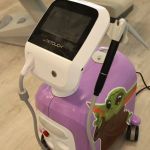How to Use a Water Flosser Effectively: A Comprehensive Guide
- Introduction to Water Flossing
- What Is Water Flossing?
- How to Use a Water Flosser Properly
- Benefits of Using a Water Flosser
- Common Mistakes to Avoid When Using a Water Flosser
- Choosing the Right Water Flosser for Your Needs
- Final Thoughts on Water Flossing
Introduction to Water Flossing
If you’ve ever been to a dentist, you’ve probably been told to floss daily. While traditional string floss is a popular choice, many people find it difficult to use, especially those with braces, implants, or sensitive gums. This is where the water flosser comes in. But, how exactly can a water flosser improve your dental hygiene routine, and how should it be used effectively?
In recent years, water flossing has gained popularity as an effective and easy-to-use alternative to traditional flossing. Water flossers, also known as oral irrigators, use a pressurized stream of pulsating water to remove plaque, food particles, and bacteria from between your teeth and along the gumline. This guide will provide all the information you need to use a water flosser effectively, ensuring you get the most out of this handy dental tool.
What Is Water Flossing?
Water flossing, sometimes referred to as oral irrigation, is a method of cleaning between your teeth and along your gums using a stream of pulsating water. Unlike traditional string floss, which you manually work between your teeth, a water flosser uses a handheld device that directs a focused stream of water at your teeth and gums. The water helps to dislodge food particles, bacteria, and plaque, effectively cleaning areas that might be hard to reach with manual flossing.
Water flossers come in various models, including countertop versions and portable, handheld models. Some water flossers offer adjustable pressure settings, allowing you to customize the intensity based on your preferences and needs. Most models come with different tips or nozzles that cater to various oral health needs, such as general cleaning, braces care, or gum disease management.
How to Use a Water Flosser Properly
Using a water flosser is relatively easy, but there are a few techniques you can follow to make sure you are using it effectively for optimal oral health. Here is a step-by-step guide on how to use a water flosser:
- Fill the Reservoir: Begin by filling the water flosser’s reservoir with lukewarm water. Some people prefer adding a small amount of mouthwash to the water for added freshness.
- Choose the Right Tip: Select the appropriate tip for your needs. If you have braces, a special orthodontic tip may be necessary. If you have gum disease, look for a tip designed to clean the gums more gently.
- Set the Pressure: Start with a lower pressure setting if you're new to water flossing, gradually increasing it as you become accustomed to the sensation. The higher the pressure, the more effective it will be at removing plaque and debris.
- Position the Flosser: Lean over the sink to avoid water splashing everywhere. Place the flosser tip in your mouth, aiming the water stream at your gumline, where your teeth meet your gums. Keep your lips slightly open to allow water to flow out and into the sink.
- Start Flossing: Turn on the flosser and begin slowly moving the tip along your gumline and between your teeth. Make sure to focus on each section of your mouth, spending about 30 seconds per quadrant.
- Rinse and Dry: Once you’ve finished flossing, turn off the flosser, rinse your mouth with water or mouthwash, and dry your device. Remember to clean the tip of the flosser after every use.
It’s recommended to use the water flosser at least once a day, preferably before brushing your teeth to remove any food particles and plaque. However, some individuals with specific oral health concerns may benefit from using it more frequently.
Benefits of Using a Water Flosser
Water flossing offers several advantages, particularly for people who struggle with traditional string flossing. Here are some of the key benefits:
- Improved Oral Health: Regular use of a water flosser can help reduce plaque buildup, prevent gum disease, and improve overall oral hygiene.
- Gentle on Gums: Water flossing is a gentler alternative to traditional flossing, making it a great choice for people with sensitive gums or those who experience discomfort from string floss.
- Effective for Braces and Implants: If you have braces, bridges, or implants, water flossing is an excellent way to clean around these dental appliances, where traditional floss may be difficult to use.
- Reduces Bad Breath: By flushing out bacteria and food particles from between your teeth, water flossing can help reduce bad breath and keep your mouth feeling fresh.
Many users report feeling an immediate sense of cleanliness and freshness after using a water flosser, and some studies suggest that it can be more effective at reducing gingivitis and gum inflammation compared to traditional flossing.
Common Mistakes to Avoid When Using a Water Flosser
While water flossing is easy to use, it’s important to avoid a few common mistakes to ensure you're getting the best results:
- Using Too High a Pressure: Starting with too high a pressure setting can cause discomfort, especially if you’re new to water flossing. Begin with the lowest setting and gradually increase the pressure as needed.
- Skipping Areas: Make sure to floss thoroughly, covering all areas between your teeth and along the gumline. Don’t rush through the process—spend a few seconds on each section of your mouth to ensure maximum cleaning.
- Not Cleaning the Device: Failing to clean your water flosser after every use can lead to bacteria buildup and reduce its effectiveness. Rinse and sanitize the tip regularly to maintain hygiene.
Choosing the Right Water Flosser for Your Needs
Not all water flossers are created equal, and selecting the right model for your needs can make a significant difference in your oral care routine. Here are some factors to consider when choosing a water flosser:
- Pressure Settings: Look for a water flosser with adjustable pressure settings so you can customize the intensity based on your comfort level.
- Size and Portability: If you travel often, consider a portable water flosser model that is compact and easy to carry.
- Extra Tips: Some models come with different tips designed for specific needs, such as orthodontic tips or periodontal tips. Choose one that fits your dental needs.
If you’re unsure which water flosser is best for you, consider consulting with your dentist for recommendations tailored to your oral health.
Final Thoughts on Water Flossing
Water flossing is a highly effective and easy way to improve your oral hygiene routine. Whether you have sensitive gums, braces, or simply prefer a more comfortable alternative to traditional flossing, a water flosser can help keep your teeth and gums healthy. By using the device correctly, you can enjoy the many benefits it offers, from reducing plaque and preventing gum disease to freshening your breath.
If you're ready to improve your dental care, consider adding a water flosser to your routine. Explore the options available at Dentistry Toothtruth and make the most of this convenient tool for a cleaner, healthier smile.







 Hester Pediatric Dentistry, P.A.5.0 (25 review)
Hester Pediatric Dentistry, P.A.5.0 (25 review) Dr. Eric Chu4.0 (18 review)
Dr. Eric Chu4.0 (18 review) Advanced Care Endodontics5.0 (14 review)
Advanced Care Endodontics5.0 (14 review) Olga Soltis, DDS4.0 (146 review)
Olga Soltis, DDS4.0 (146 review) First Choice Dental- Verona4.0 (367 review)
First Choice Dental- Verona4.0 (367 review) TruSMILES Dentistry4.0 (83 review)
TruSMILES Dentistry4.0 (83 review) The Importance of Oral Health Education During Pregnancy for a Healthy Pregnancy
The Importance of Oral Health Education During Pregnancy for a Healthy Pregnancy Best Tips for Brushing Your Teeth Properly for Healthy Gums: Essential Techniques for Oral Health
Best Tips for Brushing Your Teeth Properly for Healthy Gums: Essential Techniques for Oral Health Why Skipping Dental Checkups Can Lead to Bigger Oral Health Problems
Why Skipping Dental Checkups Can Lead to Bigger Oral Health Problems Advantages of Porcelain Dental Restorations
Advantages of Porcelain Dental Restorations How Can Diabetes Cause Tooth and Gum Problems? Preventing and Managing Oral Health Issues
How Can Diabetes Cause Tooth and Gum Problems? Preventing and Managing Oral Health Issues Healthy Habits for Promoting Good Oral Health and Hygiene: Tips for a Healthy Smile
Healthy Habits for Promoting Good Oral Health and Hygiene: Tips for a Healthy Smile